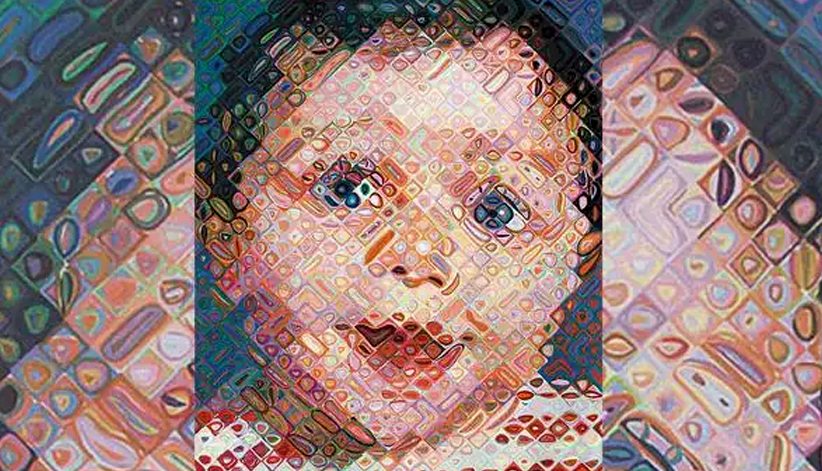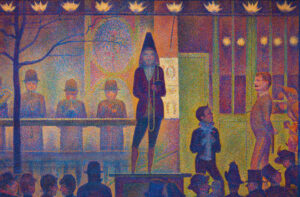
Unraveling the Artistry: What is Pointillism?
Pointillism, a captivating painting technique that emerged in the late 19th century, weaves a tapestry of artistry through meticulous dots of pure color meticulously applied to a canvas. The brilliance of this technique lies in the careful juxtaposition of thousands of tiny dots, forming an image when viewed from a distance. Rooted in the idea that the mind and eye blend these dots into a coherent image, pointillism transforms the canvas into a mesmerizing mosaic of color and texture.
The Essence of Pointillism: Technique Over Subject Matter
Unlike other art movements with specific subject matters, pointillism places technique at the forefront. The subject matter becomes secondary as long as it is painted with small, distinct dots of pure color. Renowned paintings employing this technique cover a spectrum of themes, from Vincent van Gogh’s introspective self-portrait to Paul Signac’s vivid depiction of a Parisian couple in “Sunday.” The heart of pointillism lies in the meticulous application of color dots rather than the narrative of the artwork.

Pioneers of Pointillism: Georges Seurat and Paul Signac
Georges Seurat and Paul Signac, Impressionist painters with a penchant for innovation, stand as the trailblazers of pointillism. Seurat’s magnum opus, “Sunday Afternoon on the Island of La Grande Jatte,” took over two years to complete and remains an iconic representation of pointillism. Though Seurat passed away in 1891, Signac continued to explore and expand the boundaries of this technique in his subsequent works, ensuring the legacy of pointillism lived on.
Inception and Evolution: The Birth of Pointillism
Pointillism made its debut in 1886 as an offshoot of Impressionism, introduced by Seurat and Signac. Originally termed “divisionism” by Seurat, critics later coined the more widely used “pointillism,” initially intended as a derogatory term. Critics, unconvinced of its significance compared to other painting techniques, failed to grasp the depth and innovation embedded in pointillism. Over time, however, the term shed its negative connotations, and today, pointillism stands as a respected and intriguing artistic technique.
The Apex of Pointillism: 1880s and 1890s
The zenith of pointillism unfolded in the 1880s and 1890s, a period marked by the mesmerizing creations of Seurat and Signac. While pointillism garnered admiration for its technique, it never achieved widespread recognition due to its limitations in creating depth and texture. The movement, characterized by meticulous dots forming a cohesive whole, did not position itself as a revolutionary art form. Instead, it laid the groundwork for future movements, notably influencing artists such as Vincent van Gogh, Henri Matisse, and Paul Gauguin.
The Legacy and Continuation: Neo-Impressionism
Although pointillism did not soar as a standalone movement, it birthed Neo-Impressionism, a scientific approach to painting that delved into the methodical study of lines and colors. Neo-Impressionism, while ebbing by the end of the 19th century, left an indelible mark on subsequent art movements. Visionary painters, including van Gogh, Matisse, and Gauguin, drew inspiration from the precision of pointillism, incorporating its principles into their oeuvre.
Pointillism Today: A Lingering Influence
While pointillism may have peaked in the late 19th century, its allure persists, and contemporary artists continue to explore and embrace this distinctive technique. The allure lies in its unique approach to painting, challenging artists to rethink their canvas in a myriad of dots. Though not the most influential movement, pointillism remains a testament to the enduring impact of innovative techniques in the realm of art.
In the grand tapestry of art history, pointillism emerges as a dazzling thread, weaving together the precision of dots and the artistry of technique. From the hands of Seurat and Signac to the canvases of modern creators, pointillism’s legacy endures as a testament to the transformative power of meticulous color application.
